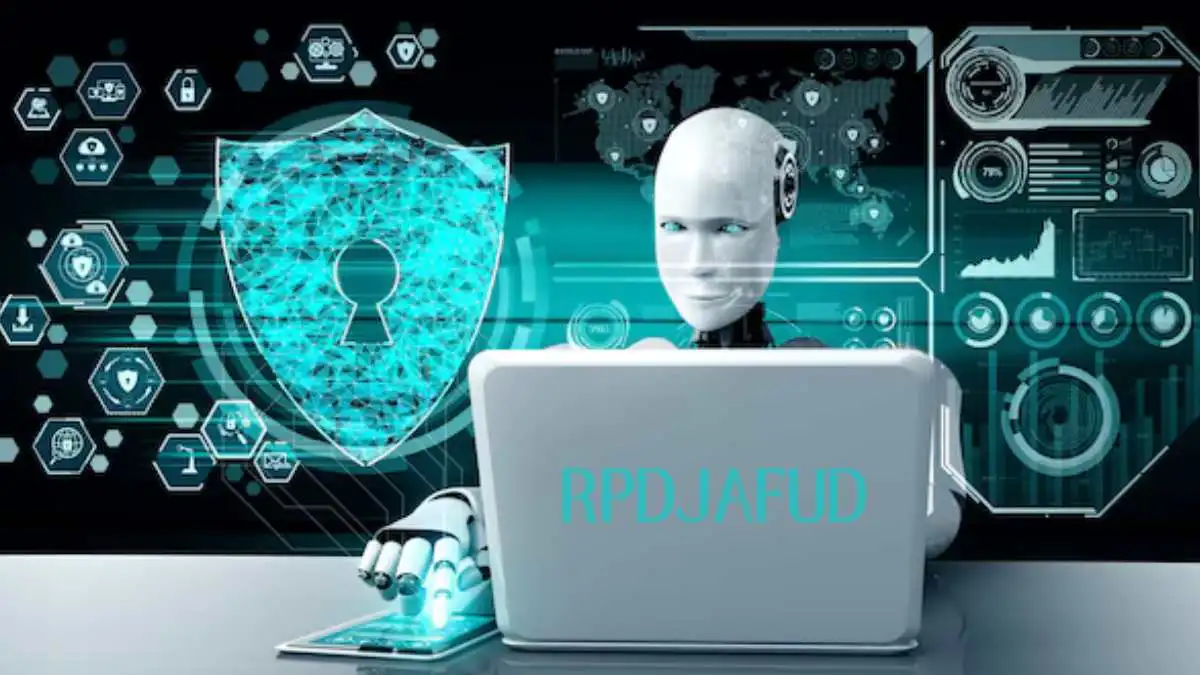Blog
APD4U9R? Complete Guide, Meaning

In an age where digital infrastructure determines the success of both personal and enterprise ecosystems, the APD4U9R framework has emerged as a unique solution for securing, identifying, and managing assets and identities. Though cryptic at first glance, APD4U9R represents a comprehensive system designed to enhance cybersecurity, simplify identification, and automate operations across digital and physical environments.
From its use as a secure identifier to its integration into enterprise systems for tracking and automation, APD4U9R is not just a string of characters — it is the foundation of an adaptable, forward-looking infrastructure for 2025 and beyond. This article will explore the meaning, features, use cases, and enterprise applications of APD4U9R, helping you understand why it’s gaining global relevance.
What Is APD4U9R and Why It Matters Now
At its core, APD4U9R is a multi-purpose, encrypted identifier system designed for high-security environments and modern digital workflows. Whether used for labeling assets, tracking devices, or securing user authentication, this code plays a role similar to a UUID (Universally Unique Identifier) or an internal product ID, but with improvements in structure, scalability, and context-aware deployment.
The rise of cyberattacks, asset mismanagement, and inefficient identity tracking has led to the need for such a framework. APD4U9R meets those demands by providing a system that combines security, automation, and traceability — all while reducing human error and operational overhead.
Decoding the APD4U9R Identifier: Meaning and Structure
Much like a barcode on a product or a VIN on a car, the APD4U9R code acts as a unique digital fingerprint. It is often generated during the lifecycle of an item, device, or digital entity. Typically, these codes are:
-
7–10 characters long
-
System-scoped and encrypted
-
Non-human-readable by design
This identifier is intentionally obscure to enhance security and reduce the likelihood of misuse or collision in databases. However, it is machine-readable, allowing seamless automation and integration with other systems.
Core Features That Set APD4U9R Apart
1. Adaptive Authentication
APD4U9R-enabled systems apply adaptive authentication that dynamically changes based on the risk context, such as login behavior, geolocation, or access device. This ensures that only authorized users gain access without overburdening the system with unnecessary checks.
2. Encrypted Data Layers
Every APD4U9R identifier is layered with end-to-end encryption, protecting metadata such as user credentials, access logs, or physical inventory data from exposure during transmission or storage.
3. Decentralized Management
Unlike traditional systems that centralize control (and thus create single points of failure), APD4U9R uses decentralized modules. This design reduces breach impact and offers greater resilience and autonomy to each stakeholder.
Real-World Applications: From Healthcare to Industry 4.0
Healthcare: Hospitals use APD4U9R to tag patient files, diagnostic equipment, and digital records. It ensures that sensitive data is only accessible by authorized personnel, while providing traceability across the care lifecycle.
Education: APD4U9R streamlines academic credential verification, giving students and educators safe access to online portals and coursework.
Logistics & Manufacturing: Factories assign APD4U9R codes to machines, raw materials, and shipments. This simplifies inventory tracking, reduces misplacement, and enhances operational efficiency.
User Experience and Frictionless Security
One of APD4U9R’s strongest points is ease of use. Despite its technical sophistication, it is designed to operate in the background — invisible to the end-user. With quick QR/NFC scanning, auto-verification, and minimal login delays, users can securely interact with platforms or environments without dealing with cumbersome password resets or manual entries.
Through responsive design and context-aware checks, APD4U9R ensures that security is proportional to threat — offering an elegant balance between usability and protection.
Privacy & Transparency: Giving Control Back to the User

Modern users demand control over their digital identity. With APD4U9R:
-
You know who accessed your data, when, and why.
-
Only you control your credentials through decentralized tokens.
-
You can revoke access at any time.
This is revolutionary in a world where tech companies often control user data. flips the model, granting full ownership to the user while maintaining top-level compliance and security.
Benefits for Businesses and Developers
✔ Compliance
Regulations like GDPR and CCPA require strict data handling rules. traceable, encrypted identifiers make regulatory compliance far more manageable.
✔ Cost and Time Savings
Automating authentication, asset tracking, and identity management means reduced operational costs and quicker onboarding processes. Manual tracking becomes obsolete.
✔ Developer-Friendly Integration
With well-documented APIs, is easily integrable into existing ERP, CRM, and HR systems. Developers can launch new features without re-architecting the entire backend.
Environmental Impact: Green Identity Tech
Sustainability is often overlooked in IT, but not here. reduces data center loads by:
-
Minimizing duplicate logins
-
Optimizing database queries
-
Reducing paper-based recordkeeping
Its cloud-first architecture lowers the carbon footprint of organizations without compromising functionality or reliability.
Global Adoption and Trust
From tech startups in Berlin to financial institutions in Singapore, organizations are embracing . Its standardized format, cross-border adaptability, and multi-language support make it ideal for global operations.
Because every aspect is trackable and auditable, builds trust between vendors, clients, and regulators, creating a safer digital marketplace for all.
Use Case: Cybersecurity Automation

In cybersecurity, APD4U9R becomes the anchor point for automation. Every device, login attempt, and patch update can be mapped to a unique code. This enables:
-
Faster breach identification
-
Rapid containment through precise targeting
-
Reliable audit trails for investigations
Organizations that implemented reduced threat response times by up to 40%, according to new security research released in late 2025.
APD4U9R in Inventory and Product Tagging
In logistics or asset-heavy industries, inventory tagging with ensures no component is ever misplaced. Tags are easily scannable, and because the identifiers are universal, cross-system integration becomes effortless.
Similarly, as a product ID, allows every unit to be tracked from manufacturing to customer delivery — enhancing supply chain visibility and customer support accuracy.
The APD4U9R Framework A Blueprint for the Future
Organizations adopting the APD4U9R framework often experience:
-
Reduced human error
-
Faster onboarding of devices and users
-
Better asset lifecycle visibility
-
Enhanced digital confidence across stakeholders
In 2025, where speed, security, and sustainability converge, offers a future-proof structure ready to adapt to whatever technological changes lie ahead.
Conclusion
The answer appears to be yes. Whether you’re a startup building infrastructure from scratch or a global corporation retrofitting legacy systems, APD4U9R offers the tools needed to modernize your approach to identity, tracking, and automation. By combining strong security principles with adaptability, it ensures that as the world evolves, so will your systems — without compromising trust, transparency, or control.
FAQs
Q1: What is the primary function of an APD4U9R identifier?
A: The APD4U9R identifier serves as a unique, encrypted tag for assets, digital entities, or users. It’s designed to be non-human-readable, making it more secure, and is typically generated to help systems track lifecycle stages such as creation, modification, use, and retirement. The identifier is especially useful in inventory, cybersecurity, and automation where accurate tracking and low error tolerance are required.
Q2: How does APD4U9R improve cybersecurity in enterprise environments?
A: By assigning unique APD4U9R codes to each digital component—such as devices, virtual machines, or login sessions—companies gain precise visibility into their digital ecosystem. When a cyber threat occurs, each action is traceable to a specific tag, enabling rapid diagnostics and targeted responses. Additionally, its adaptive authentication ensures dynamic protection based on risk levels, strengthening overall cyber defense.
Q3: Is APD4U9R compatible with legacy systems like ERP or CRM platforms?
A: Absolutely. The APD4U9R framework is designed with interoperability in mind. Through RESTful APIs and flexible data models, it can be embedded into existing systems such as ERP, CRM, HRM, or logistics platforms. Once integrated, these systems use the code as a central reference, reducing data silos and improving organizational coherence.
Q4: How does APD4U9R enhance audit and compliance capabilities?
A: APD4U9R creates a transparent and immutable trail of actions, access events, and lifecycle transitions. This is crucial for audits, especially under regulatory frameworks like GDPR or SOC 2. Each identifier maps directly to metadata, helping auditors determine when, how, and by whom an asset or identity was used. That level of granularity ensures easier compliance and quicker responses to audits.
Q5: What risks should organizations consider before adopting APD4U9R?
A: While powerful, APD4U9R requires structured governance. Risks include improper code generation, lack of standardization, and code sprawl if multiple teams generate codes without documentation. Training staff and defining a clear specification (e.g., code length, format, retirement process) are essential. Without this structure, could create as much confusion as it solves.
-

 Celebrity6 months ago
Celebrity6 months agoHow Old Is Roux Lopez? WWE Stars Becky Lynch & Seth Rollins’ Daughter
-

 Celebrity6 months ago
Celebrity6 months agoRaquel Pedraza: Former Tennis Player and Taylor Fritz’s Ex-Wife
-

 Celebrity6 months ago
Celebrity6 months agoMary Marquardt: The Untold Story of Harrison Ford’s First Wife
-

 Celebrity6 months ago
Celebrity6 months agoHow Old Is Marina Pearl LeBlanc? All About Matt LeBlanc’s Only Child

















